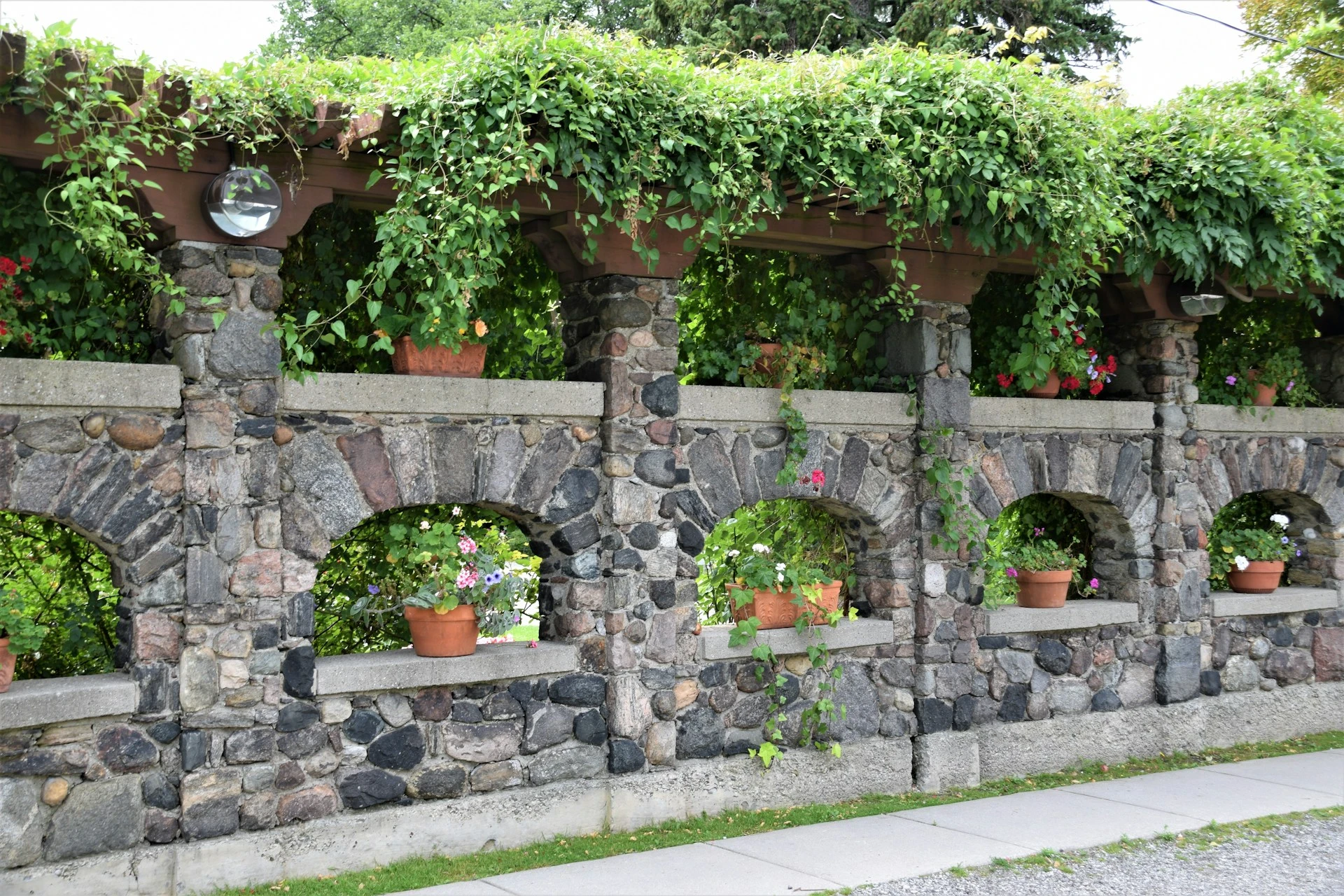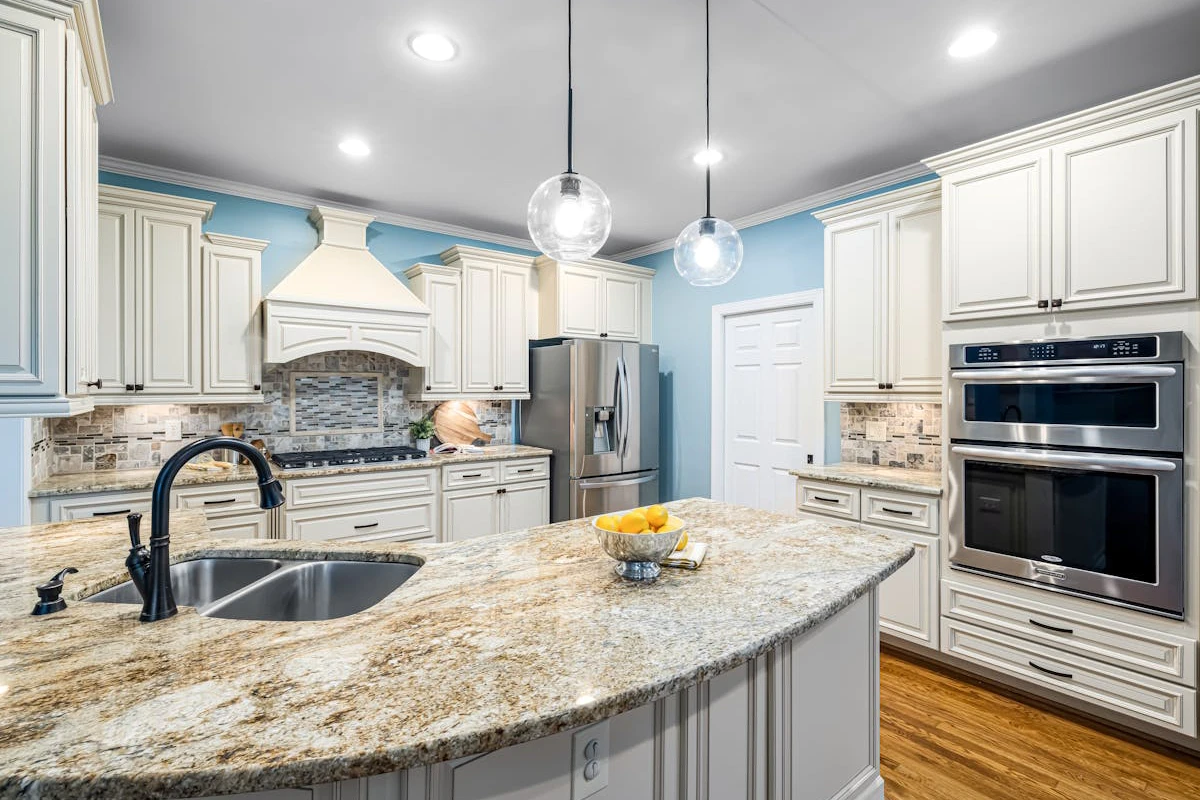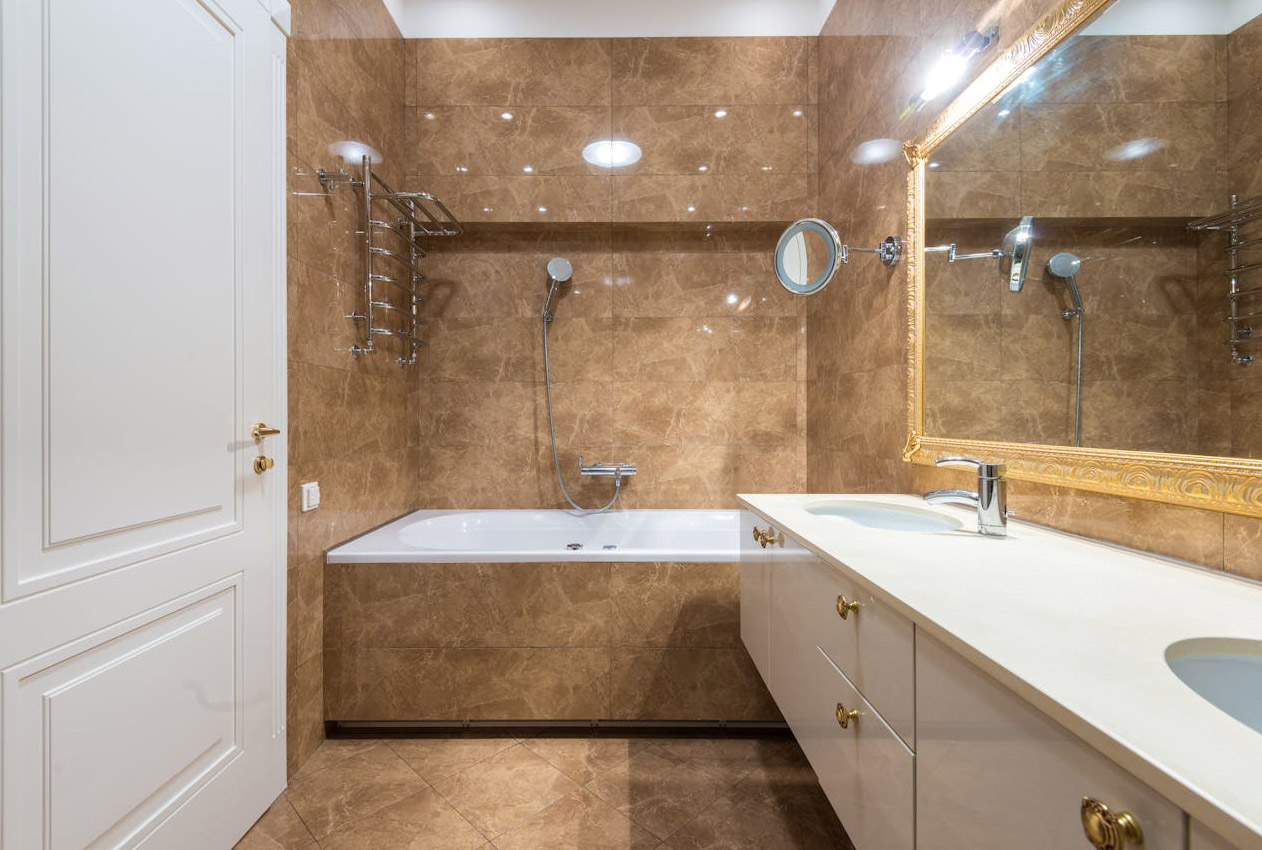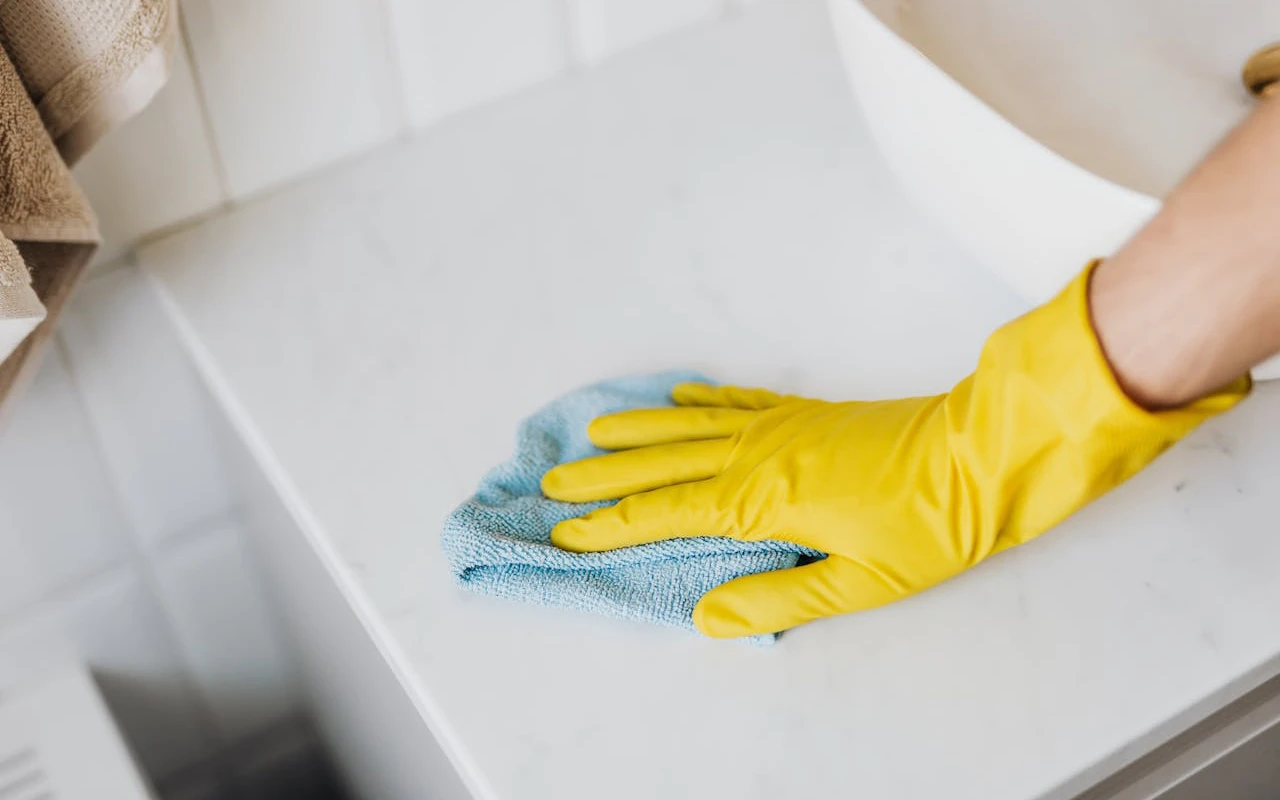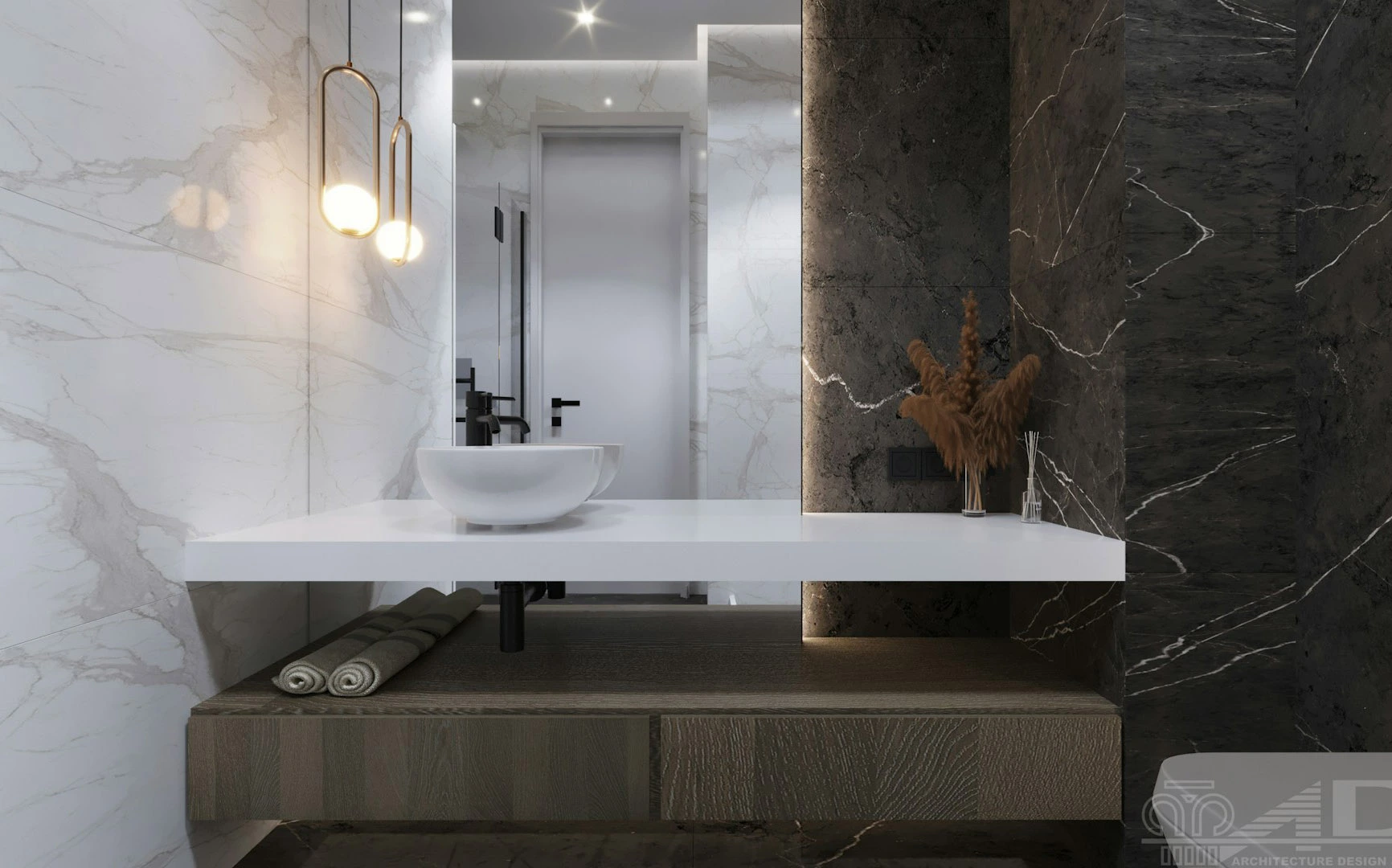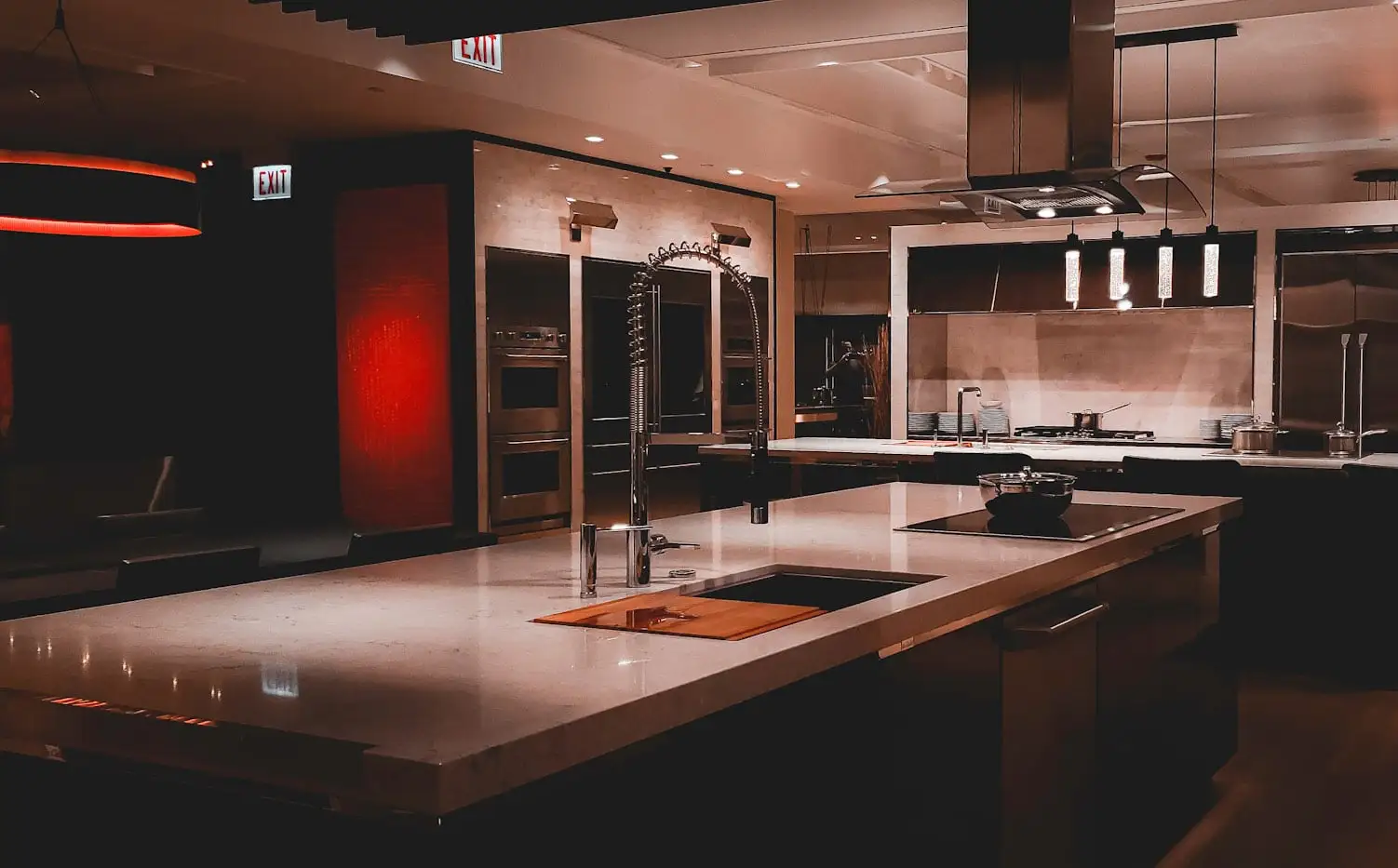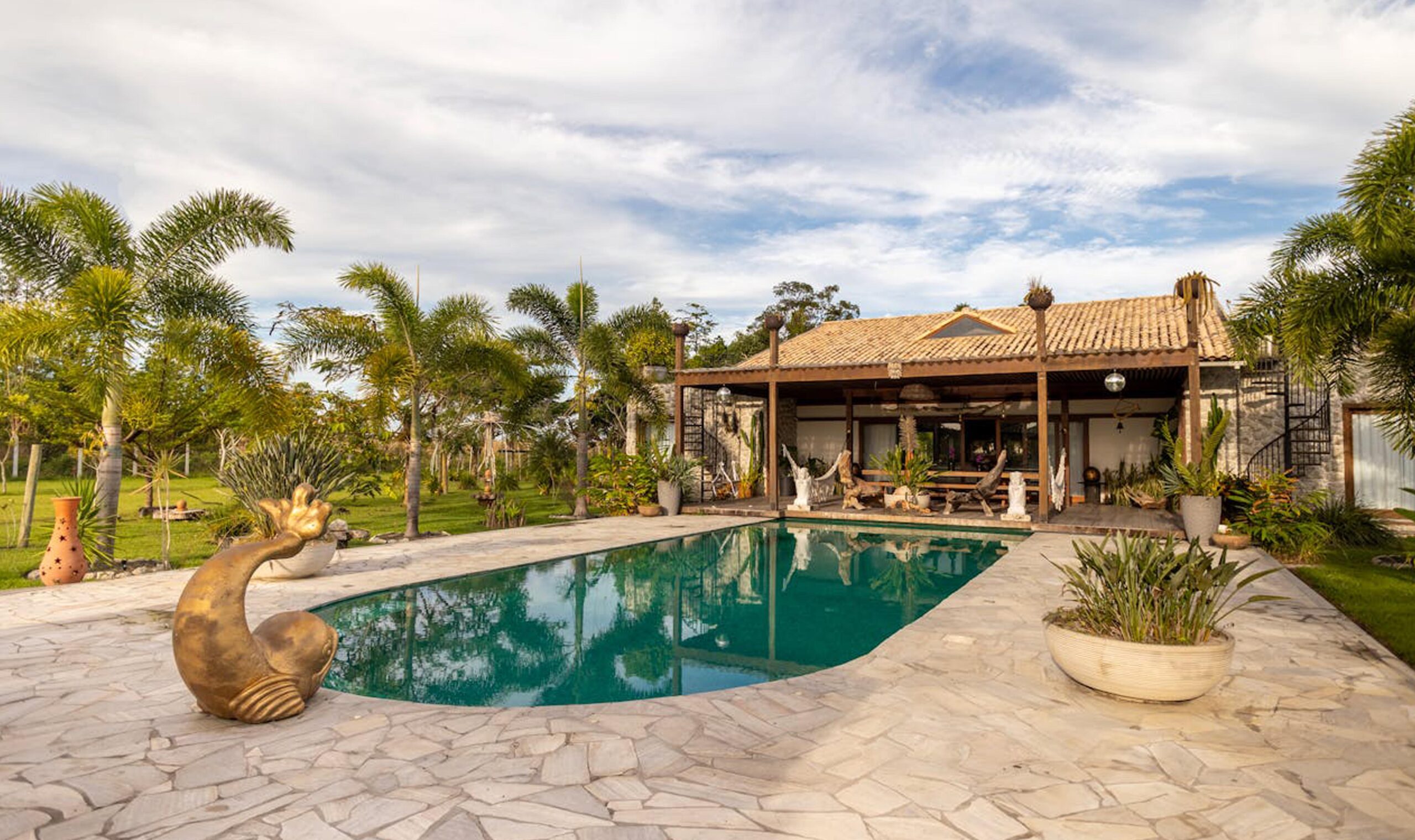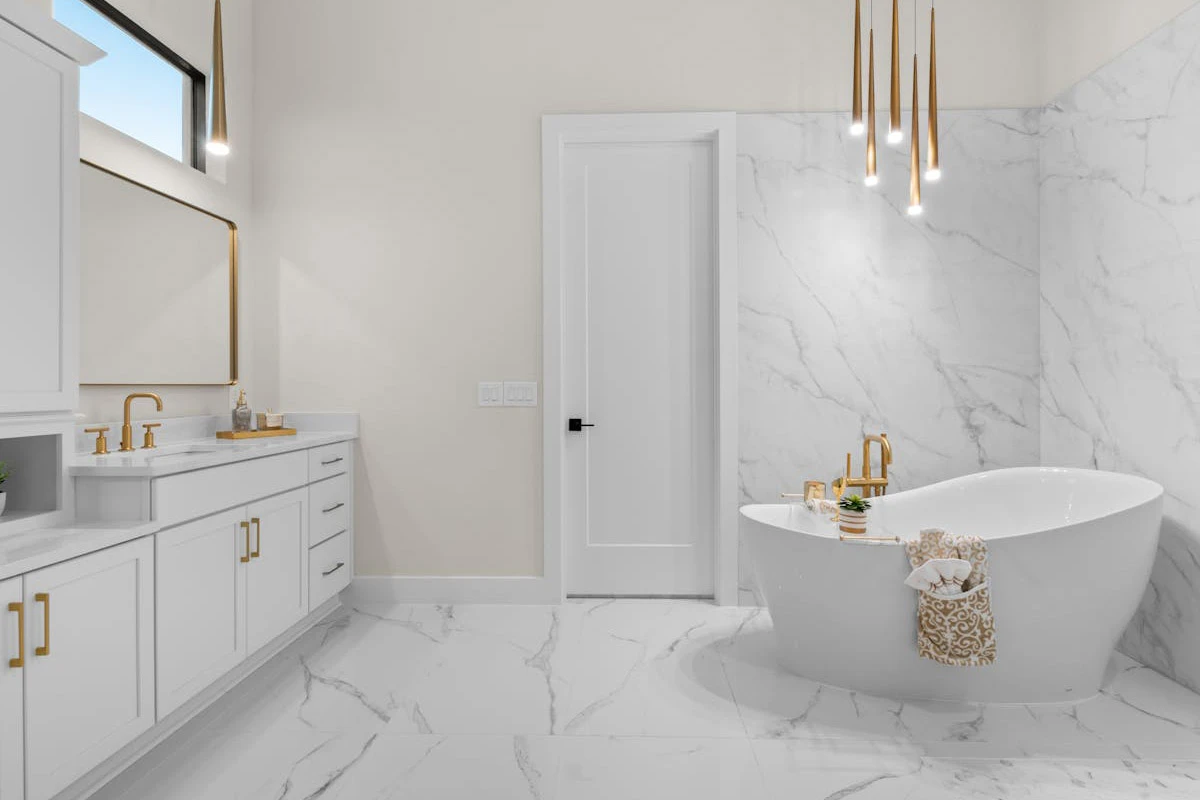When planning a bathroom renovation, few materials match the timeless beauty, durability, and elegance of natural stone. But with options like marble, granite, quartz, and slate on the table, choosing the best stone for bathroom renovation can feel overwhelming.
In this guide, we’ll break down the top stone materials for bathrooms, covering their pros, cons, and design potential to help you make the right decision for your space.
🧱 Why Choose Natural Stone in Bathrooms?
Natural stone elevates a bathroom from basic to beautiful. It offers:
Long-term durability
Unique patterns and textures
Luxurious aesthetics
Higher property value
From spa-inspired showers to sleek vanity tops, stone surfaces add both form and function.
🏛️ 1. Marble: Timeless Elegance
Marble is synonymous with luxury. Its smooth surface and stunning veining make it ideal for upscale bathroom designs.
✅ Pros:
Elegant and visually striking
Cool to the touch – ideal for warm climates
Versatile for floors, walls, and vanities
❌ Cons:
Porous — requires sealing to prevent staining
Can be etched by acidic cleaners or products
Slippery when wet (use honed finish for safety)
🔍 Best use: Shower walls, accent features, countertops, and vanities
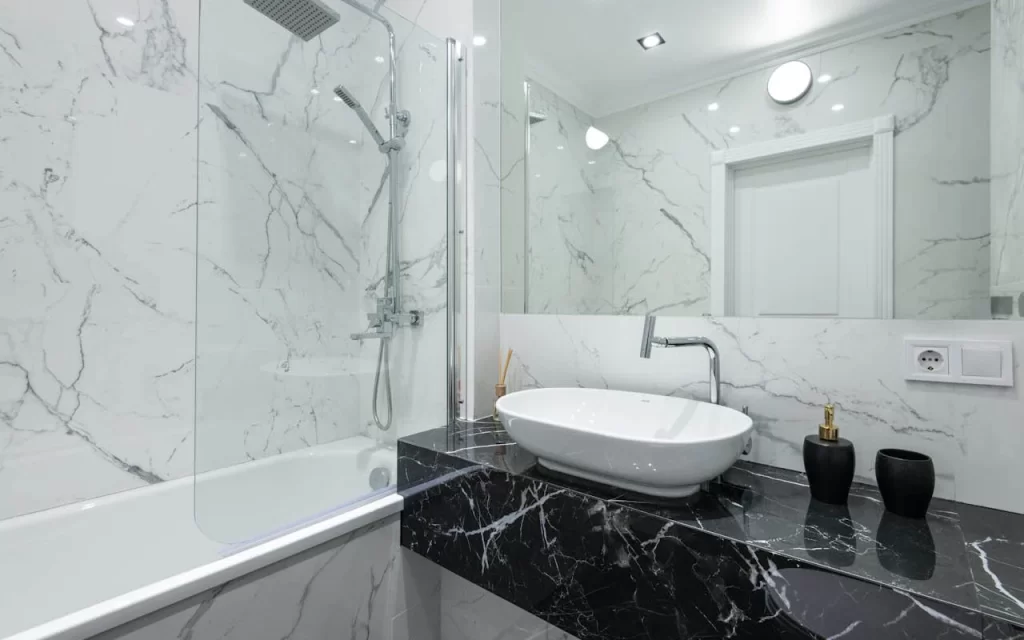
🪨 2. Granite: Practical and Durable
Granite is a strong, low-maintenance stone that resists scratches and moisture — perfect for daily-use bathrooms.
✅ Pros:
Extremely hard and durable
Resists moisture and bacteria
Wide color range: from deep blacks to warm neutrals
❌ Cons:
Slightly more textured surface (unless highly polished)
Must be sealed periodically for best performance
🔍 Best use: Vanity tops, flooring, and tub surrounds
🧼 3. Quartz: Sleek and Non-Porous
While technically engineered stone, quartz offers a uniform, non-porous surface perfect for modern bathroom designs.
✅ Pros:
No sealing required
Stain-resistant and low maintenance
Available in a wide variety of styles and colors
❌ Cons:
Less heat-resistant than natural stone
Lacks the “natural” veining of marble or granite
🔍 Best use: Countertops, backsplashes, and vanity surfaces
🪨 4. Slate: Textured and Earthy
Slate brings a rugged, natural charm to bathrooms and is known for its slip-resistant texture.
✅ Pros:
Naturally slip-resistant — ideal for wet areas
Dark, earthy tones add depth and character
Durable and long-lasting
❌ Cons:
Can flake or chip over time
Limited color range (mostly dark tones)
🔍 Best use: Bathroom flooring, walk-in showers, feature walls
🧖♀️ 5. Travertine: Warm and Classic
Travertine offers a classic Mediterranean look and works well in both rustic and refined bathrooms.
✅ Pros:
Warm, soft color tones
Natural texture and variation
Soft underfoot
❌ Cons:
Porous — needs sealing
Softer than granite or quartz
🔍 Best use: Shower surrounds, flooring, and wall cladding
🔍 Comparison Table: Best Stones for Bathroom Renovation
| Stone Type | Appearance | Maintenance | Slip Resistance | Best Use |
|---|---|---|---|---|
| Marble | Elegant & Classic | Medium | Low (Polished) | Walls, vanities |
| Granite | Bold & Durable | Low | Medium | Floors, countertops |
| Quartz | Sleek & Uniform | Very Low | Medium | Vanities, backsplash |
| Slate | Rustic & Textured | Low | High | Floors, showers |
| Travertine | Warm & Natural | Medium | Medium | Walls, floors |
💡 Design Tips When Using Stone in Bathrooms
Mix textures: Pair polished stone with matte fixtures for contrast
Go seamless: Use large slabs to reduce grout lines in showers
Add lighting: Under-cabinet or backlighting enhances stone veining
Seal regularly: Keep natural stone surfaces looking fresh and stain-free
🔚 Final Thoughts
Choosing the best stone for bathroom renovation depends on your lifestyle, design vision, and how much maintenance you’re comfortable with. Whether you’re drawn to the luxurious appeal of marble, the rugged charm of slate, or the practicality of granite and quartz, natural stone can help you create a bathroom that’s both functional and unforgettable.


